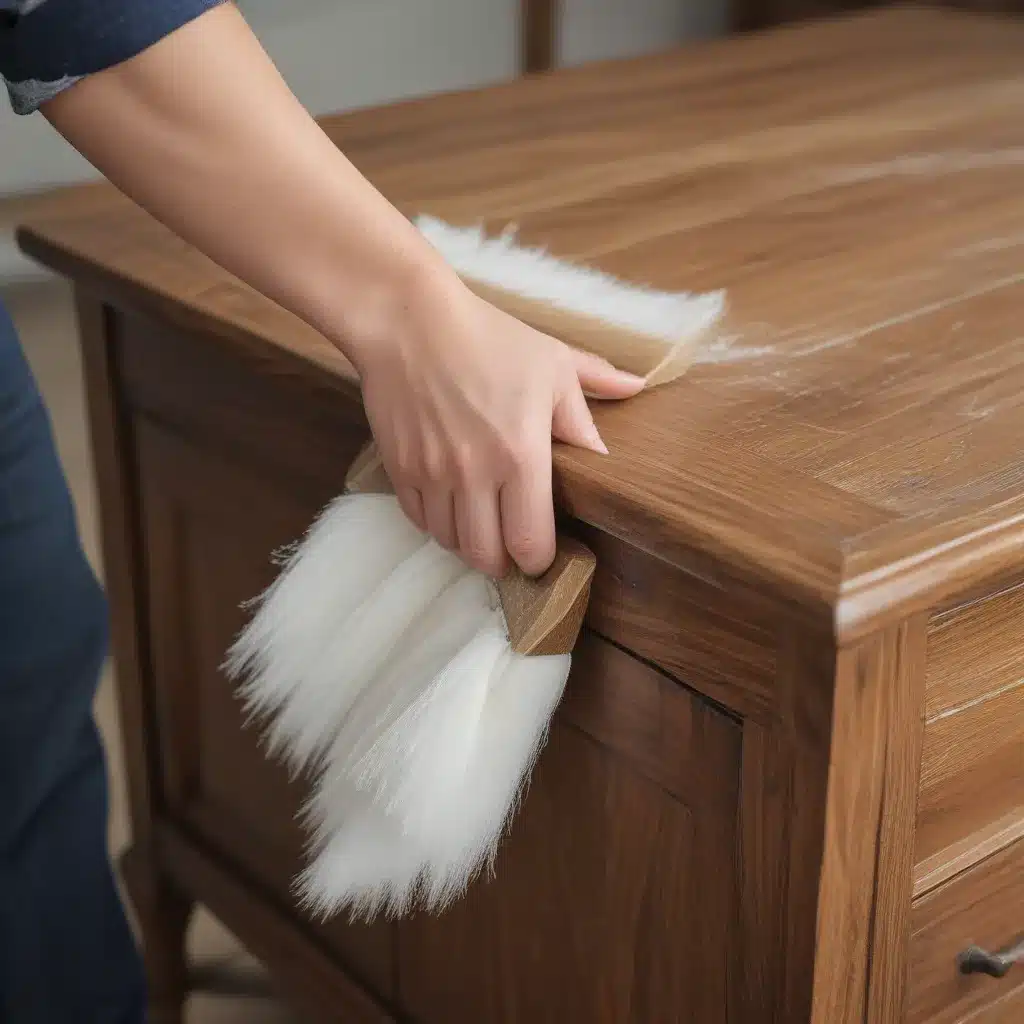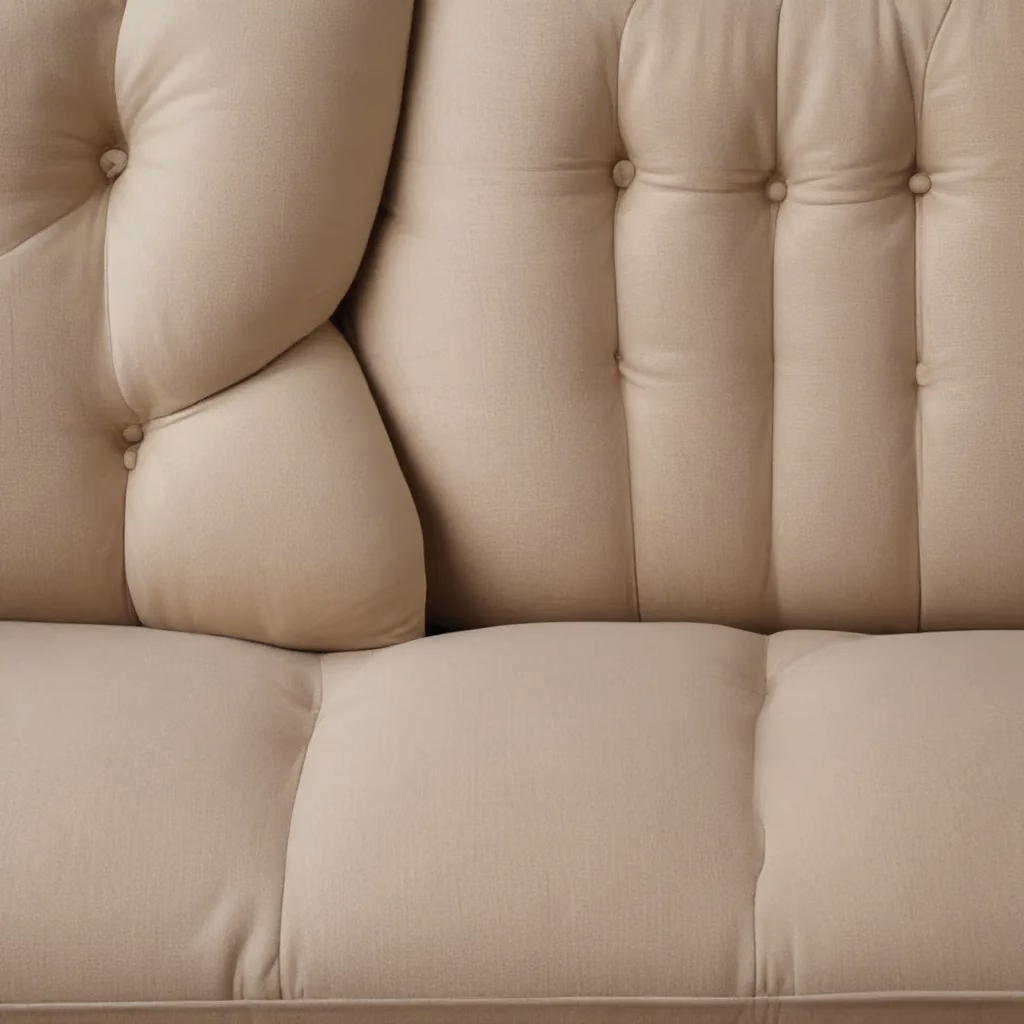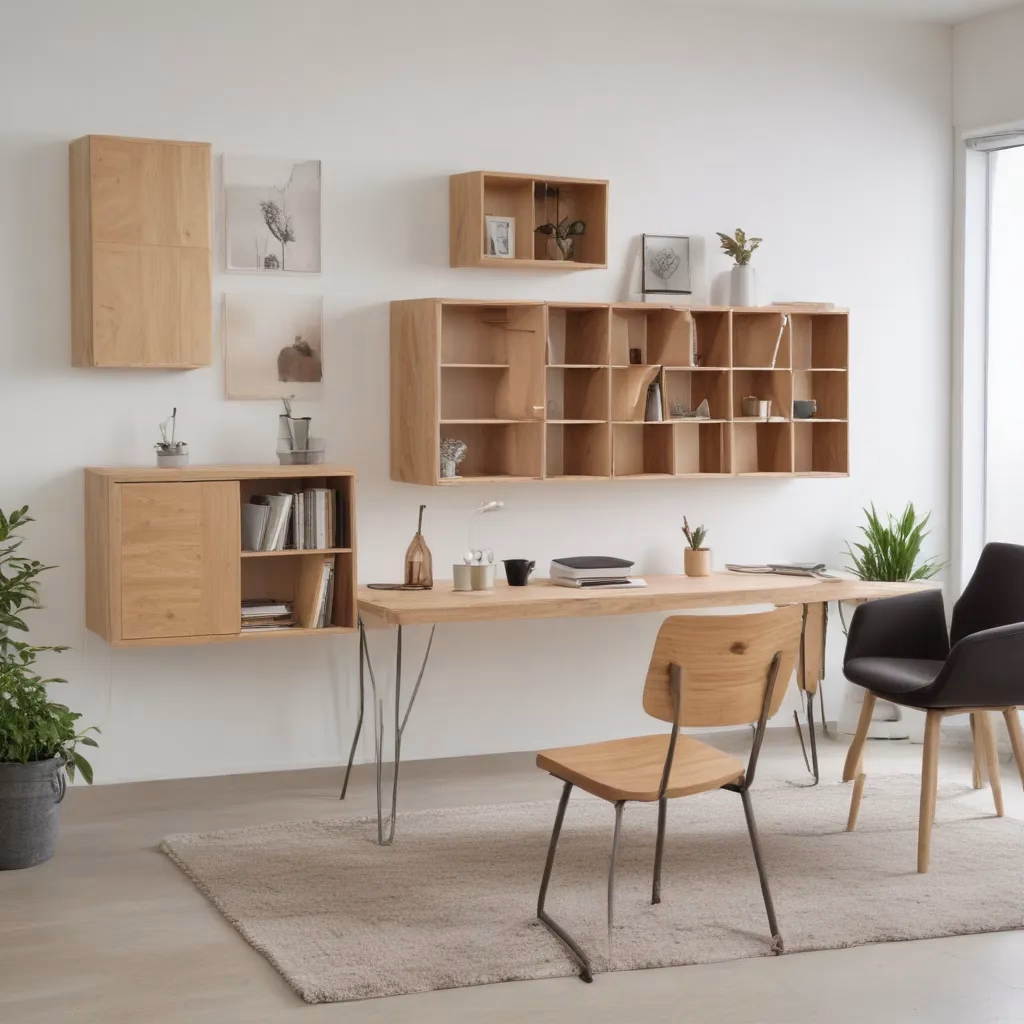Proper Dusting Techniques for Fine Furniture
Ah, the age-old question that plagues every fine furniture owner: how do I keep my beloved pieces looking as pristine and polished as the day I brought them home? Well, my friends, I’m here to let you in on the secrets of proper dusting techniques that will have your furniture sparkling like new, without risking any damage to those delicate surfaces.
As a self-proclaimed dust-busting extraordinaire, I’ve tried just about every method under the sun, from the traditional feather duster to the latest high-tech gadgets. And let me tell you, I’ve learned a thing or two along the way. So, pull up a chair, grab a microfiber cloth, and get ready to take your furniture maintenance game to the next level.
Understanding the Anatomy of Dust
Before we dive into the nitty-gritty of dusting, it’s important to understand the enemy we’re up against. Dust, that seemingly innocuous combination of dirt, debris, and dead skin cells, can be a real menace to fine furniture if left unchecked.
Studies have shown that dust particles can actually scratch and dull the finish on your furniture over time, leading to an unsightly and prematurely aged appearance. Not to mention, those pesky little specks can also attract and trap moisture, creating the perfect environment for mold and mildew to take hold.
So, what’s a furniture-loving, dust-hating individual like myself to do? The key, my friends, lies in developing a comprehensive dusting routine that tackles the problem at its root.
The Importance of Routine
They say that consistency is the key to success, and when it comes to dusting, this couldn’t be more true. Establishing a regular dusting schedule is the foundation of keeping your fine furniture in tip-top shape.
I like to think of it as a dance, where I lead the dust and it follows my every move. By taking the time to dust on a consistent basis, be it weekly or bi-weekly, you’re able to stay one step ahead of the game, preventing the buildup that can lead to serious damage.
As one of my fellow Reddit cleaning enthusiasts pointed out, using a microfiber cloth or a swiffer duster can be a great way to tackle those flat surfaces. But the key is to make sure you’re using the right tool for the job and not just relying on the same old method every time.
The Versatile Microfiber Cloth
Now, let’s talk about that trusty microfiber cloth. This unassuming little powerhouse is truly the MVP of the dusting world. Not only does it effectively trap and hold onto dust particles, but it also won’t scratch or damage those delicate finishes we’re so intent on preserving.
I like to keep a few of these babies in my cleaning arsenal, each designated for a specific purpose. One for the tabletops, another for the intricate carvings, and so on. That way, I can tackle every nook and cranny with precision and efficiency.
The team at Sofa Spectacular swears by the microfiber method, and I have to say, I’m inclined to agree. It’s just such a versatile and effective tool, whether you’re dusting a delicate antique or a modern, minimalist piece.
Mastering the Swiffer Duster
But let’s not forget about the humble Swiffer duster, another weapon in the dust-busting arsenal. While some may scoff at its disposable nature, I’ve found that it can be a real lifesaver when it comes to those hard-to-reach areas and intricate details.
As the experts over at YouTube have shown, the key to using a Swiffer effectively is all about technique. You want to make sure you’re gently sweeping the duster across the surface, rather than just letting it sit and collect dust. And don’t be afraid to use a little elbow grease – those stubborn specks won’t know what hit them.
Of course, the downside of the Swiffer is that it’s a one-time-use kind of deal, which can get a bit pricey over time. That’s why I like to supplement it with my trusty microfiber cloths, using the Swiffer for those hard-to-reach areas and then going over everything with a cloth to ensure I’ve caught every last dust particle.
The Importance of Furniture Care Products
Now, I know what you’re thinking: “But wait, won’t all those cleaning products I’ve been using actually do more harm than good?” And you know what, you’re absolutely right to be concerned.
Many of the traditional furniture polishes and sprays on the market can actually contain harsh chemicals and abrasives that can strip away the protective finish on your beloved pieces. And let’s not forget the strong scents that can be a real turn-off for those of us with sensitive noses.
That’s why I always recommend investing in high-quality, furniture-specific care products that are designed to be gentle and effective. Look for ones that are free of harsh chemicals and artificial fragrances, and that use natural ingredients like beeswax or plant-based oils to nourish and protect the wood.
The team at Sofa Spectacular has some great recommendations when it comes to furniture care products, and I can personally vouch for their effectiveness. Just a few sprays and a gentle wipe-down, and your pieces will be looking good as new.
Tackling Tricky Surfaces
Now, I know what you’re thinking – “But what about those intricate carvings and delicate surfaces? Surely, they require a more specialized approach, right?”
You, my friend, are absolutely right. When it comes to the more intricate and delicate areas of your fine furniture, you’ll need to be a bit more, shall we say, finessed in your dusting approach.
That’s where a good old-fashioned soft-bristle brush comes in handy. Gently sweeping the brush over those intricate carvings and detailing can help to lift and trap the dust without damaging the underlying wood.
And let’s not forget about those glass or mirrored surfaces – they require a special touch, too. A simple microfiber cloth and a bit of elbow grease should do the trick, but be sure to avoid using any harsh chemicals or abrasives that could leave behind unsightly streaks or smudges.
The Importance of Proper Technique
Now, I know what you’re thinking – “All this talk of tools and products is great, but what about the actual technique? Surely, there’s more to it than just wiping things down, right?”
Ah, you’re absolutely right, my friend. Proper dusting technique is the key to keeping your fine furniture looking its absolute best. And let me tell you, it’s not as straightforward as you might think.
For starters, you’ll want to make sure you’re using gentle, circular motions when dusting flat surfaces. This helps to lift and trap the dust, rather than just pushing it around. And when it comes to those intricate details, you’ll want to use a soft-bristle brush and a delicate touch to avoid any unintended damage.
But perhaps the most important tip I can give you is to always work from top to bottom. This helps to ensure that any dust or debris that you dislodge from the upper surfaces doesn’t end up settling on the lower ones, forcing you to start all over again.
And let’s not forget about the importance of regular furniture maintenance. By taking the time to dust and clean your pieces on a regular basis, you’ll not only keep them looking their best, but you’ll also extend their lifespan and protect those beautiful finishes.
The Rewards of Proper Dusting
As you can probably tell, I take my dust-busting duties pretty seriously. But you know what? It’s all worth it when I step back and admire the sparkling, pristine surfaces of my beloved furniture.
There’s just something so satisfying about seeing those delicate woodgrains and intricate carvings gleam in the light, without a single speck of dust in sight. And let me tell you, the compliments I get from guests never get old.
But it’s not just about the aesthetic appeal, my friends. Proper dusting and furniture care is also a matter of preservation. By taking the time to lovingly maintain your pieces, you’re ensuring that they’ll continue to be a part of your life for years, if not decades, to come.
So, the next time you find yourself staring down a layer of dust on your favorite sofa or end table, remember – this isn’t a battle, it’s a dance. And with the right tools, techniques, and a little elbow grease, you can keep your fine furniture looking as stunning as the day you brought it home.




